Each year the Festival of Vodoun takes place in Benin on January 10th. Vodoun (Voodoo) has been a government recognized religion in Benin since 1996 and each year many tribes put aside their differences and come together on the beach in Ouidah to take part in the traditional celebration of the religion as a national holiday.
Approximately 10-20% of the 13 million people in Benin practice Voodoo as a religion. Benin is widely considered to be the birthplace of the Voodoo religion.
Followers of Voodoo believe in the power of nature and the natural forces that course through everything. They also emphasize ancestor worship and believe that the spirits of the dead live side by side with the world of the living.
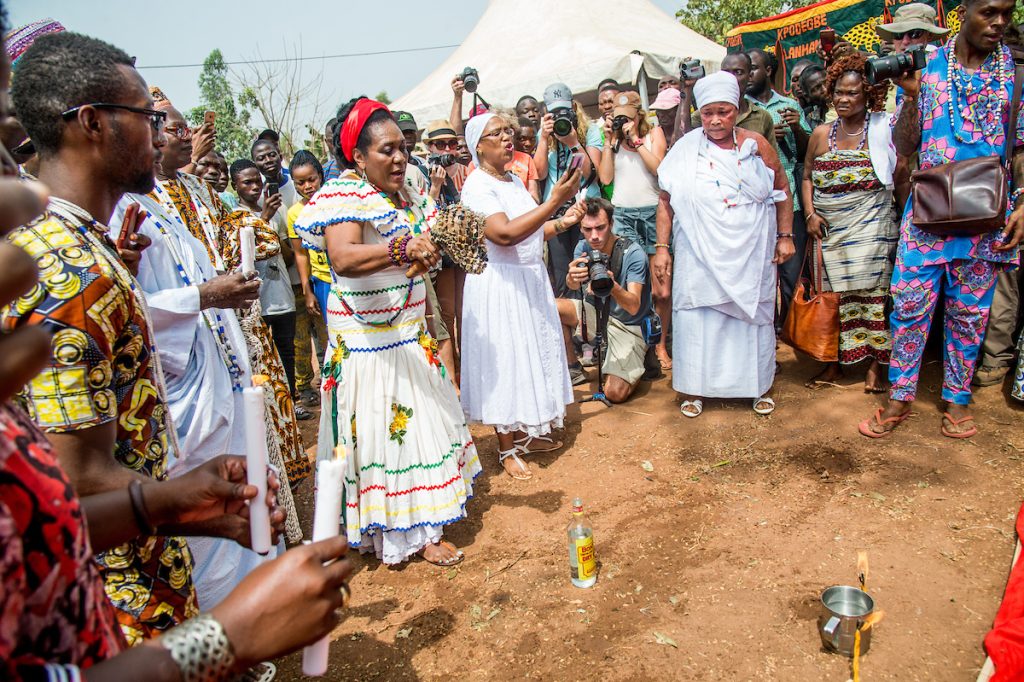
Pre-pandemic many of my travels were full of adventure as I ventured around the world working to capture images of unique festivals and tribes in some of the most remote places across the globe.
In 2018, I traveled with my friends on a trip across West Africa. Our trip started in Ghana for a New Year’s festival and we traveled through Togo ultimately ending up in Benin to experience the Voodoo Festival in Ouidah.
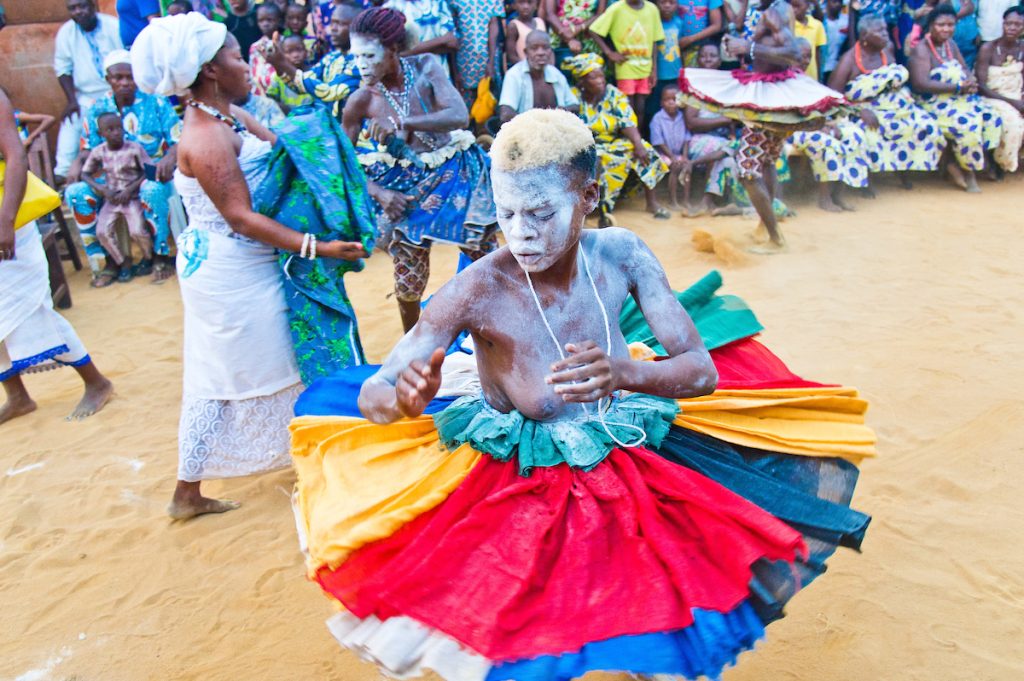
One thing I will note is that this festival is not for the faint of heart. Animals are sacrificed as part of the rituals that occur with all of the tribes. The animals are all used for food and celebrations with families but the activities and images can be quite brutal as you watch the ceremonies take place.
Day 1 in Benin- An Introduction to the Voodoo Religion
We arrived in Ouidah on January 9th and started diving into the traditional practices that take place in small villages leading up to the main festival on Saturday. One of our first stops was to the Sacred Python Temple. The python is believed to bring vitality and protection for many Africans.
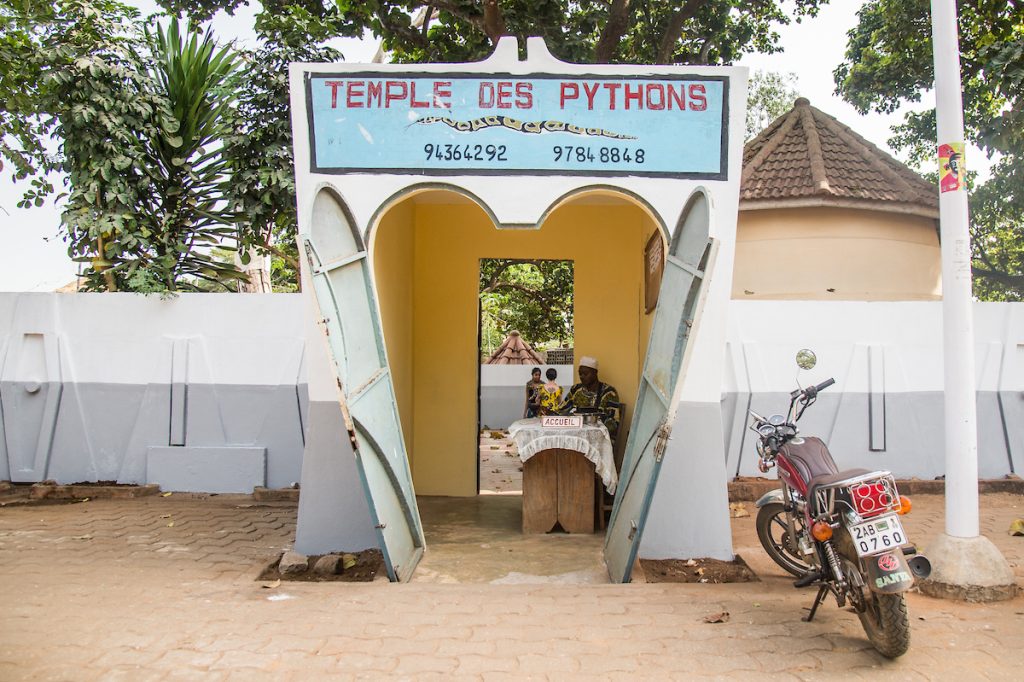
I am terrified of snakes and I had very high anxiety even stepping through the gates of the temple where the snakes are kept and many live and move freely outside the buildings. Most of my friends were happy to be able to hold the animals but I stayed at least a few feet away at all times.
We also stopped by the “fetish” market near Ouidah. Vodum talismans, called “fetishes,” are objects such as skulls, bones and animal parts as well as statues that are sold at these markets for healing and spiritual rejuvenation.
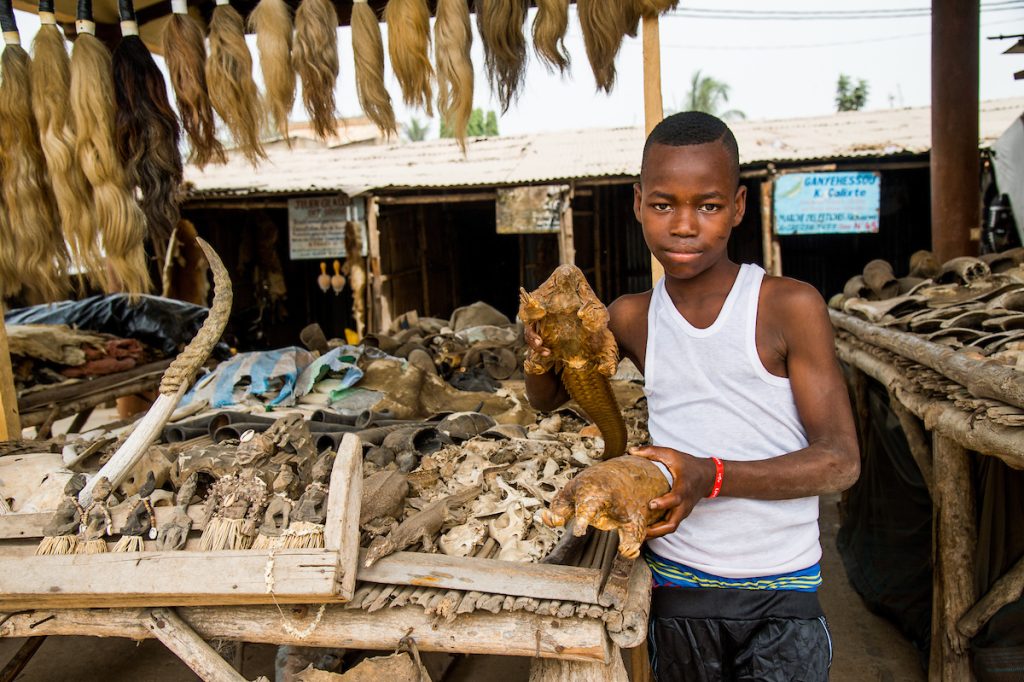
The spirits that inhabit the fetish are said to be able to perform different tasks. Voodoo priests are often on hand at the markets to advise on which combination of these objects should be used to create shrines to call different spirits and their associated powers usually for positive puposes.
After leaving the market, we headed to a village where we could see the spectacle of Zangbetos in a traditional high energy ceremony. The Zangbeto are said to be the traditional voodoo guardians of the night.
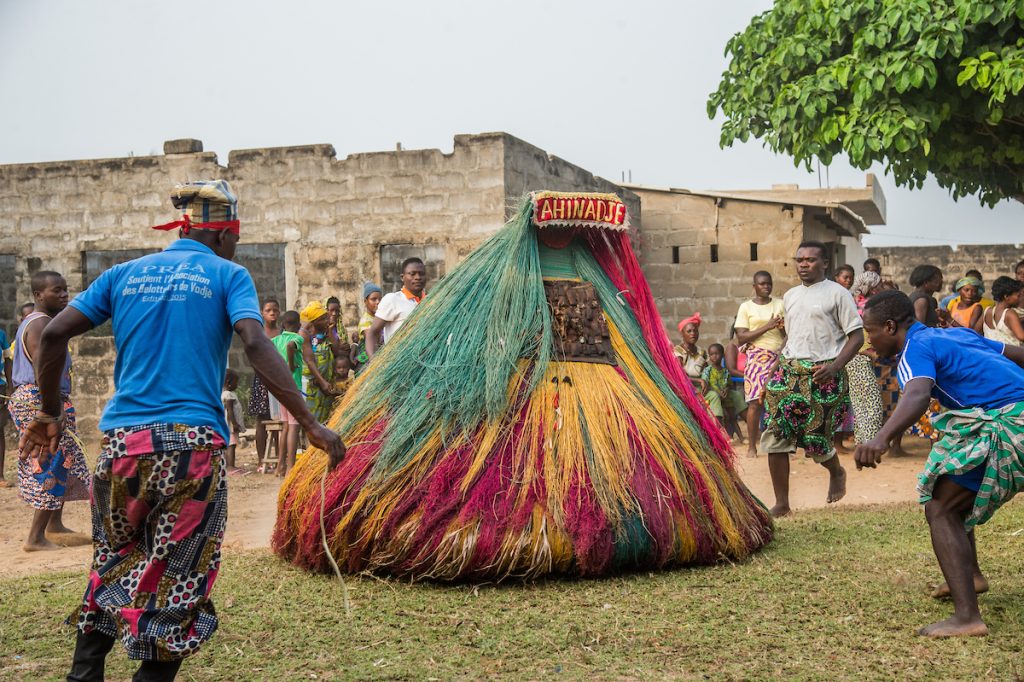
The Zangbeto wear an intricate covering of woven hay, raffia and other materials which can be dyed into colorful hues. They are able to fall into a trance which, according to tradition, enables their bodies to be inhabited by spirits who possess special knowledge of the actions of the people they are representing in the spirit world . However, Ogu legend tells that there are no humans under the costume, only spirits of the night.
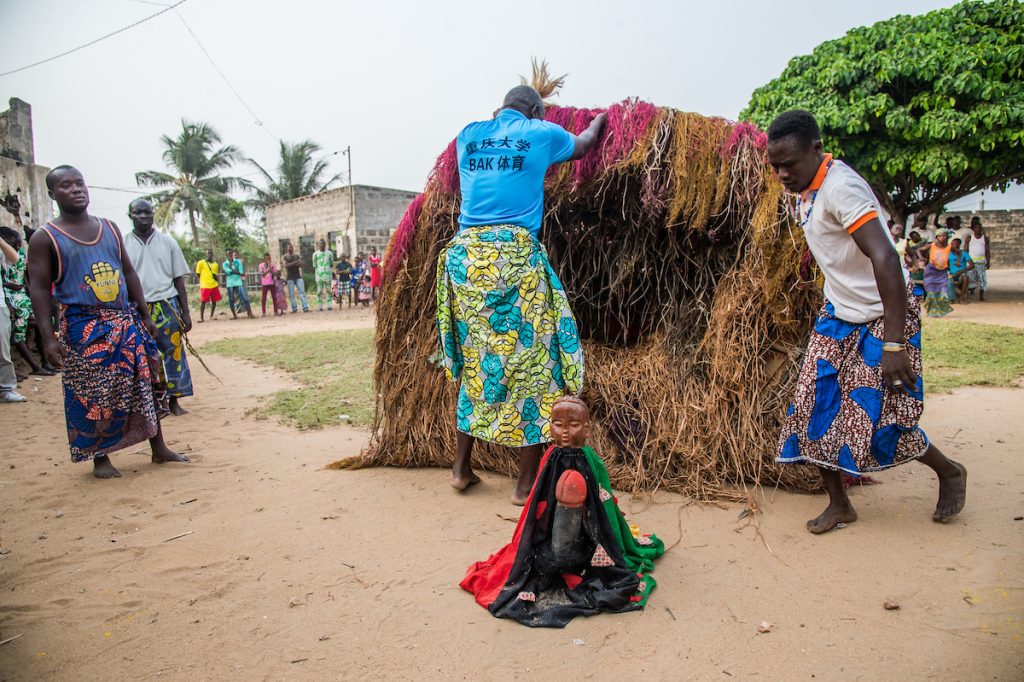
There is an elaborate performance dance with wild running and sweeping up dust by the Zangbeto during their festivals to live drum performances. The Zangbeto resemble a spinning top during the performance. The movement takes place and then men assistants will flip over the Zangbeto to show that there is nothing under the covering except a small wooden moving statue. It was obviously some sort of trick with the Zangbeto being able to hide inside the covering but it was quite impressive to see live and definitely gives the illusion that there was no person inside.
Our group also made a stop to see Egungun performances and dances performed by the Nigeran Yoruba tribe dressed as voodoo spirits. Each spirit represents a dead member of the Nigerian Nagu clan. Intricate colorful textiles are formed into costumes worn during masquarde performances.
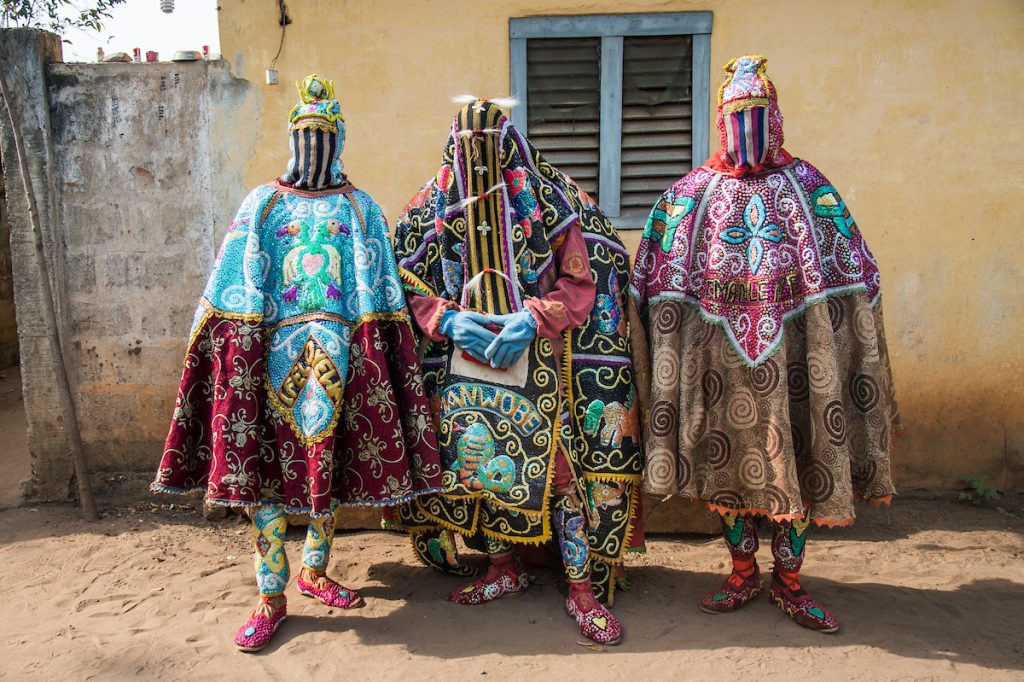
Egungun wear nets over their faces to prevent identification. They also wear long and colorful robes and are regarded as the representatives of the ancestors. The masks they wear are handed down from generation to generation and are seen by the Yoruba as possessing great power.
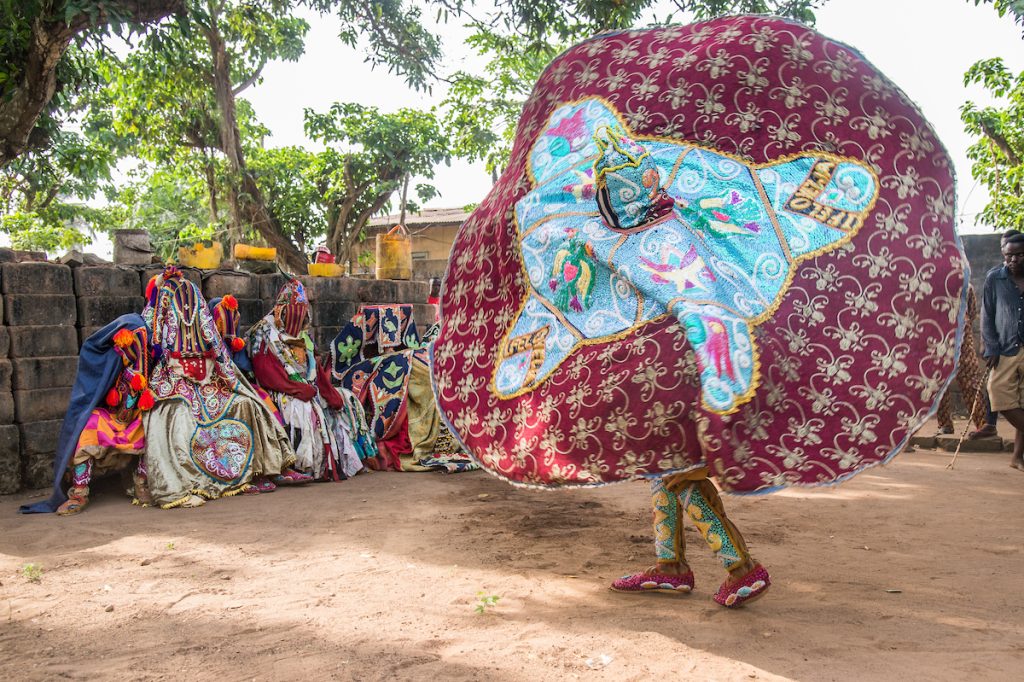
Once in costume and mask, the dancer is no longer a member of the material world. He enters a trance like state, becoming a conduit for a deceased relative to enter his body. When this is achieved the dancer will begin to gyrate and contort in ways not normally doable in a waking state. This was truly special to be able to see one of these ceremonies performed live from this secret society.
We ended the day at a local village outside of Ouidah where a voodoo ceremony was taking place in the street. The members of the community seemed to go into a transcendental state as they move and dance almost violently as the town onlooks.
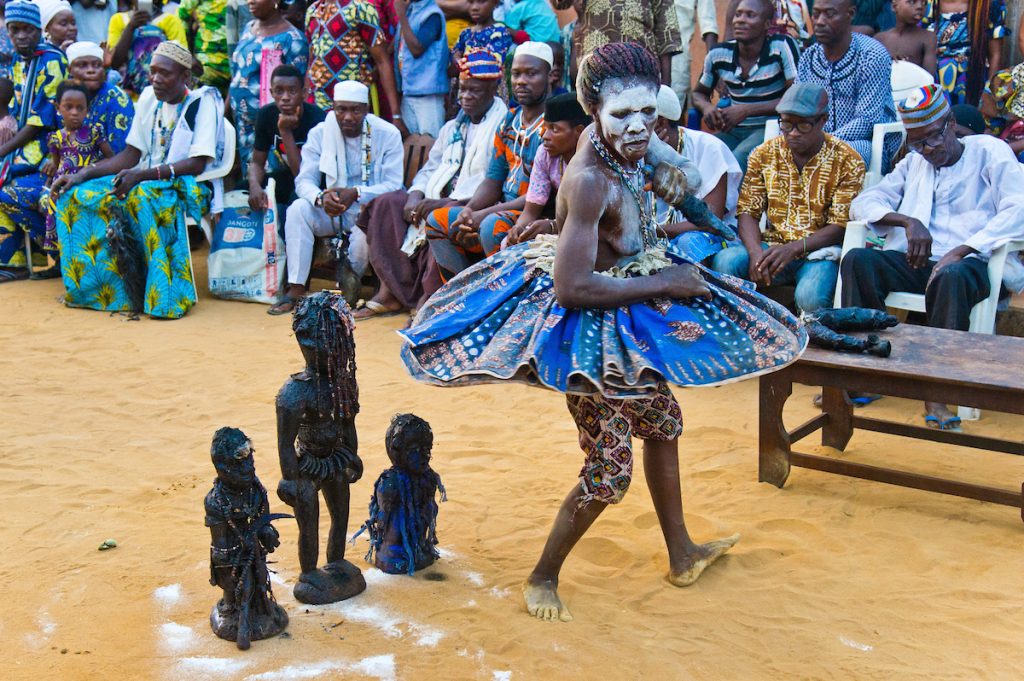
One of the strangest things that we witnessed was that when followers became almost too out of control in the trance a priest or priestess would throw talcum powder on them to calm them down.
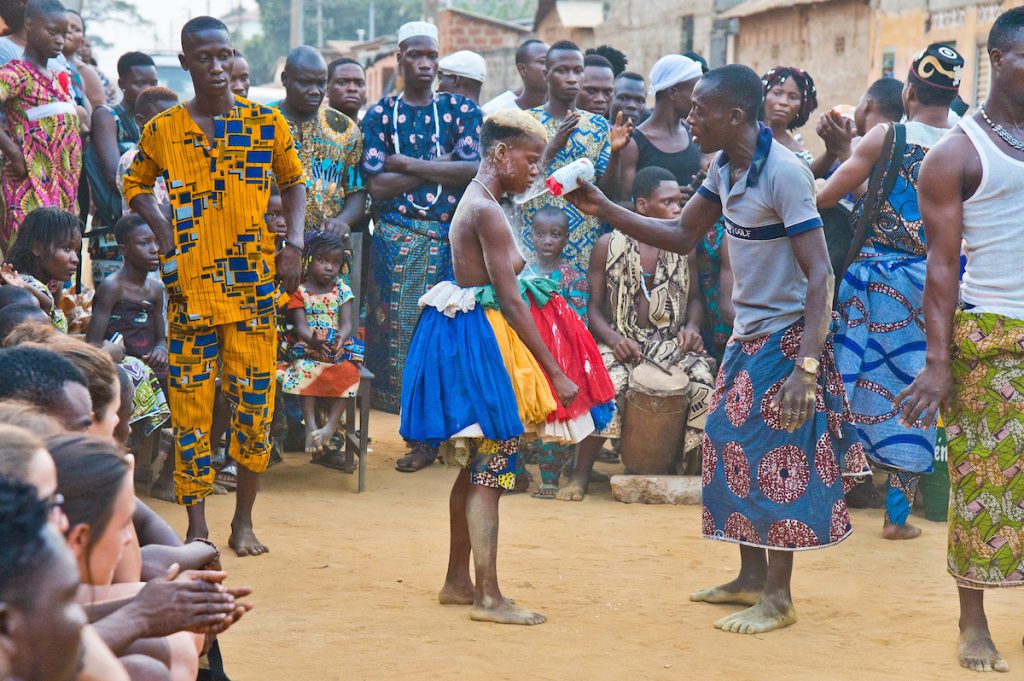
Day 2 in Benin- Festival of Voodoo
The Official Fête du Vodoun takes place on January 10th each year. On the morning of January 10th, we attended smaller ceremonies with presentations that took place around the local area before heading to the beach for the festival. Several of these rituals took place in the forest areas and others were hosted at people’s private homes.
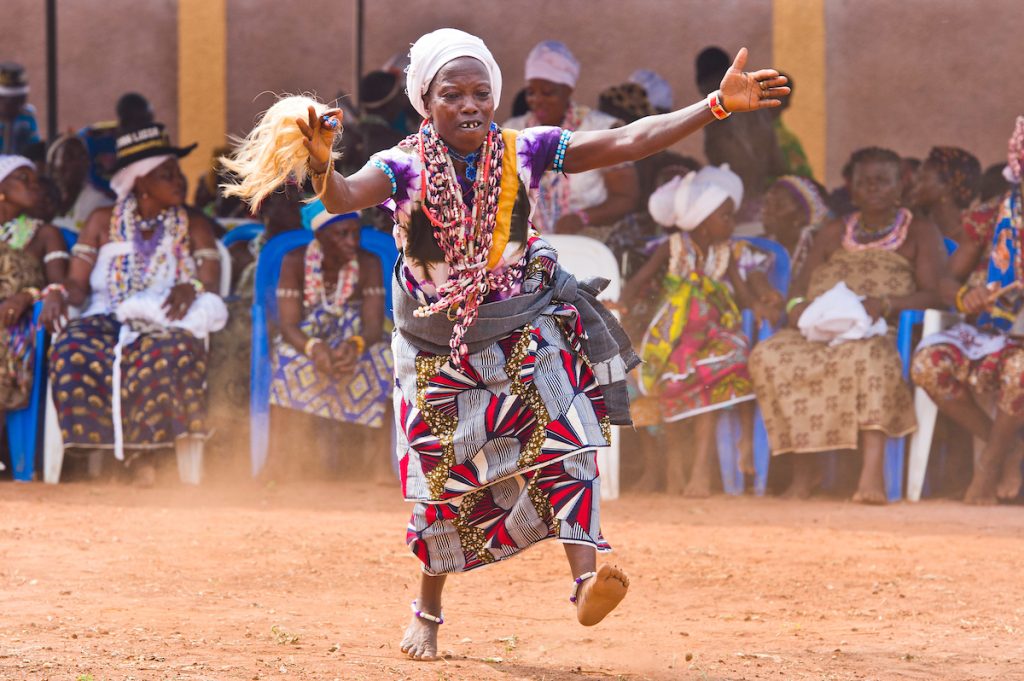
We were also able to see the processions starting with Voodoo priests as they walked toward the festival. Many different churches of Voodoo gather on the beach outside Ouidah near the imposing “Door of No Return” which is a concrete and bronze arch that serves as a memorial to enslaved Africans who were taken from the Port of Ouida to the Americas.
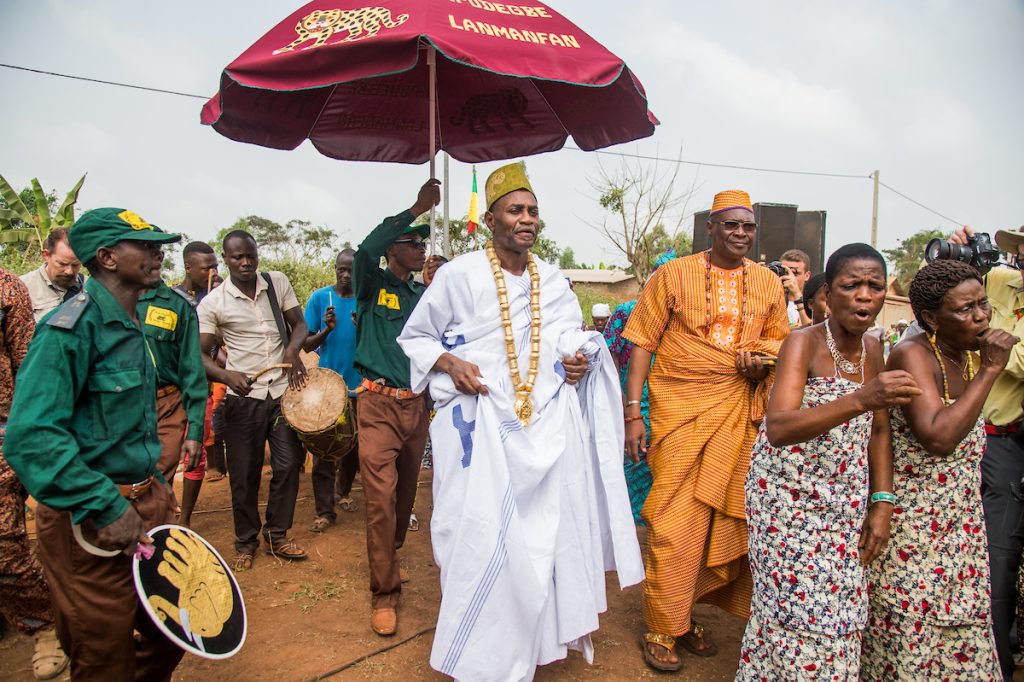
Voodoo Priests and Queens enter the festival grounds in a formal parade fashion. The event officially kicks off with somewhat of a VIP procession and offering ceremony. Gin is poured over an egg placed at the center of chalk/talk circles, drums beats play in the background as a young goat was brought forth and sacrificed on the same spot.
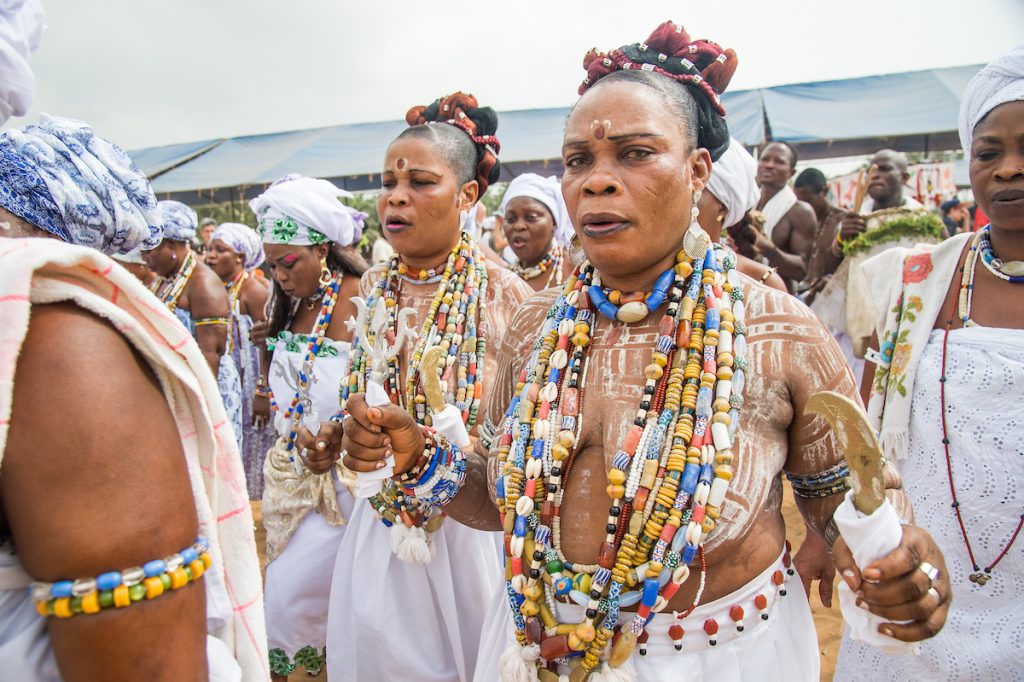
The different church groups continued throughout the day building small shrines and repeating the process over and over. A shrine is built with fetishes, members of the group spit gin and a sugary beverage like Fanta onto the shrine and then an animal sacrifice takes place with the entire church gathered around.
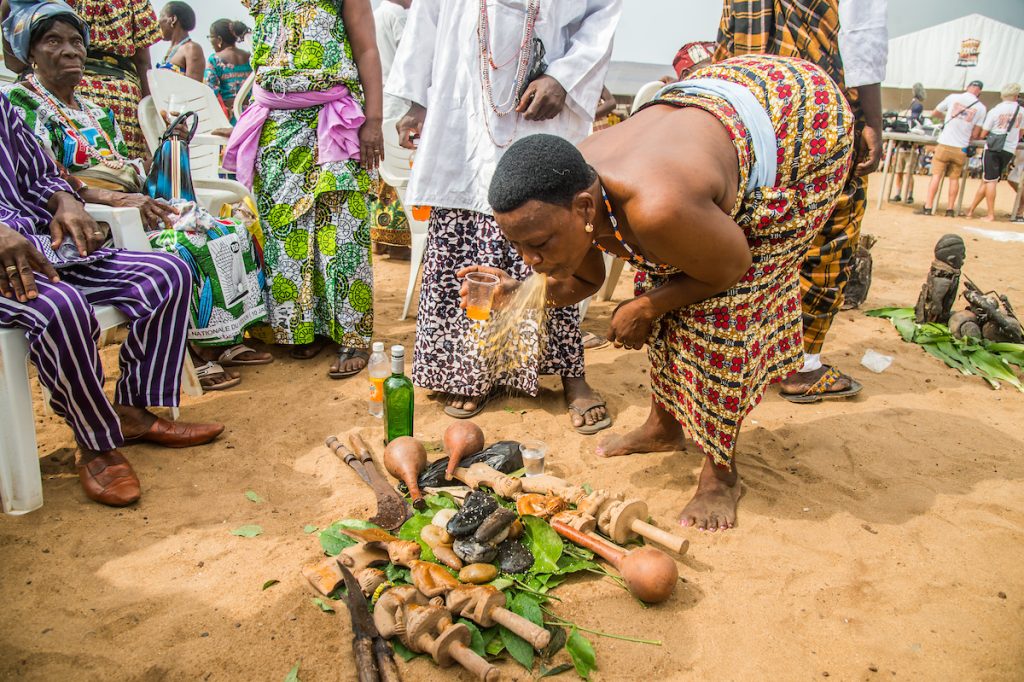
Throughout the day as we saw the rituals continue, we observed people going in and out of a trance state. Trance is brought on in Voodoo ceremonies through the beat of drums and other musical instruments playing repetitively over and over again until finally the god or spirit is summoned and enters into a human body. It was truly one of the most unique travel experiences I have experienced.
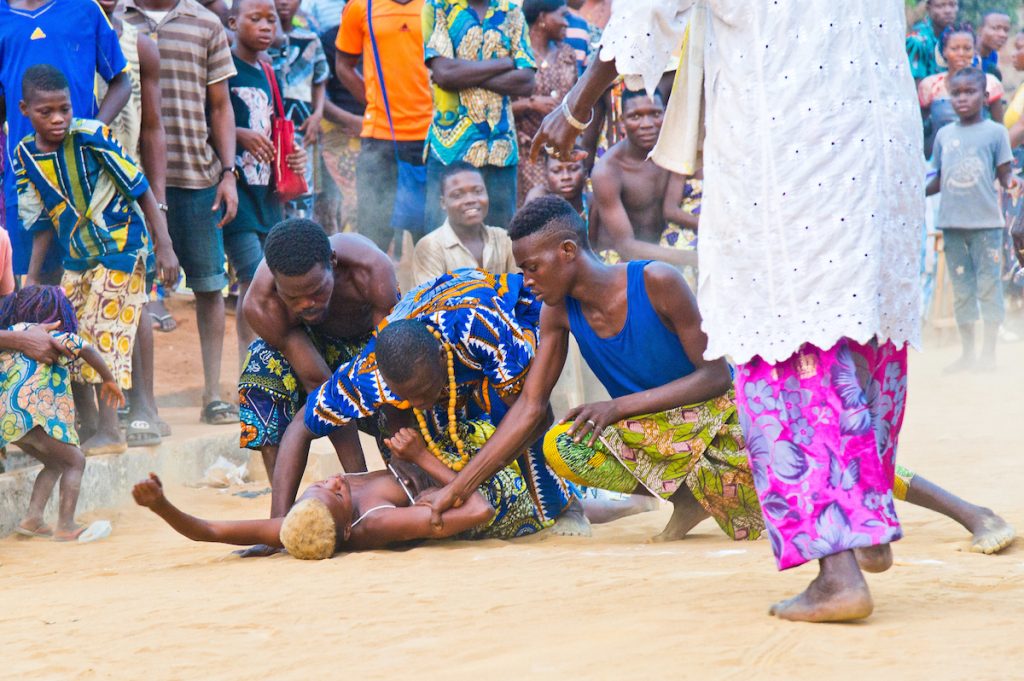
There are a few notes to consider for travelers and photographers who may be interested in attending the Voodoo Festival. One thing to keep in mind is that you will see live animal sacrifice and you need to be mentally prepared for these practices.
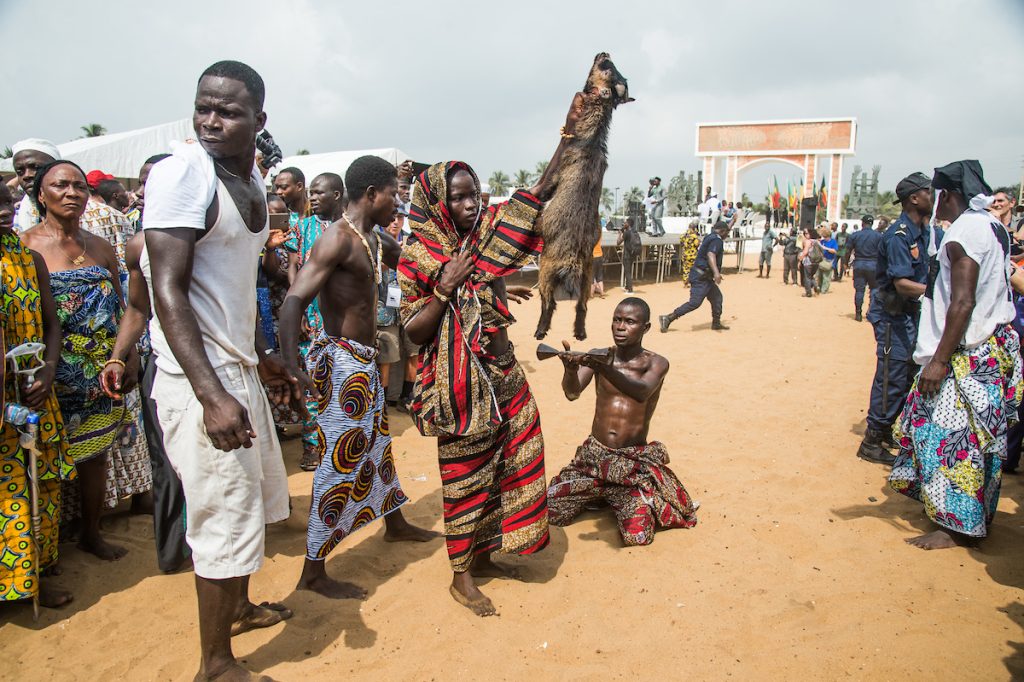
The festival takes place starting at Noon and lasts for many hours in the hottest part of the day on the beach. It is very hot and the activities take place on the beach with no shade during the festival except in seating areas that are covered on the sides. It is important to take breaks and stay hydrated throughout the day.
Also, it is very important to be respectful when photographing the festival and surrounding events. Many of the followers asked not to be photographed and some even became violent lunging at photographers and throwing sand on them to damage their cameras when they would not stop taking photographs when asked. It is important to note that this is not an event for tourists but an event to celebrate their religion on a special day each year.

